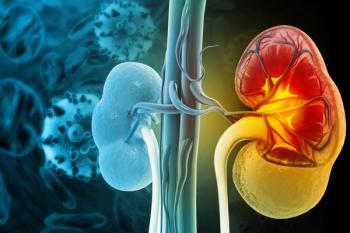
|Articles|October 7, 2021
Pharmacy Clinical Pearl of the Day: Bell’s Palsy
Author(s)Saro Arakelians, PharmD
Viruses that have been linked to Bell's palsy include those that cause cold sores and genital herpes (herpes simplex); Chickenpox and shingles (herpes zoster); and infectious mononucleosis.
Advertisement
Clinical Pearl of the Day: Bell’s Palsy
Bell’s palsy is a sudden weakness in the facial muscles.
Insight:
- In most cases, the weakness is temporary and significantly improves over weeks.
- The weakness makes half of your face appear to droop. Your smile is one-sided and your eye on that side resists closing.
- Bell's palsy, also known as acute peripheral facial palsy of unknown cause, can occur at any age. For most people, Bell's palsy is temporary.
- Symptoms include rapid onset of mild weakness to total paralysis on one side of the face occurring within hours to days, rapid onset of mild weakness to total paralysis on one side of the face, facial droop, drooling, pain around the jaw, headache, a loss of taste, and changes in the amount of tears and saliva.
- The exact reason Bell's palsy occurs isn't clear; however, it's often related to having a viral infection.
- Viruses that have been linked to Bell's palsy include those that cause cold sores and genital herpes (herpes simplex); Chickenpox and shingles (herpes zoster); infectious mononucleosis (Epstein-Barr); Cytomegalovirus infections; respiratory illnesses (adenovirus); German measles (rubella); mumps (mumps virus); flu (influenza B); and hand-foot-and-mouth disease (coxsackievirus).
- Treatment options include corticosteroids, such as prednisone, or antiviral drugs, physical therapy and surgery.
Sources:
Newsletter
Stay informed on drug updates, treatment guidelines, and pharmacy practice trends—subscribe to Pharmacy Times for weekly clinical insights.
Advertisement
Latest CME
Advertisement
Advertisement
Trending on Pharmacy Times
1
FDA Approves Denosumab Biosimilars, Osvyrti and Jubereq, for Reference Products’ Indications
2
CDC’s Autism Statement Sparks New Concerns Over Vaccine Safety Messaging
3
Billions at Stake: 340B Program Integrity and Sustainability in 2024–2025
4
Patients With Long COVID Face Varying Trajectories, With Most Facing Symptoms Long After Infection
5












































































































































































































